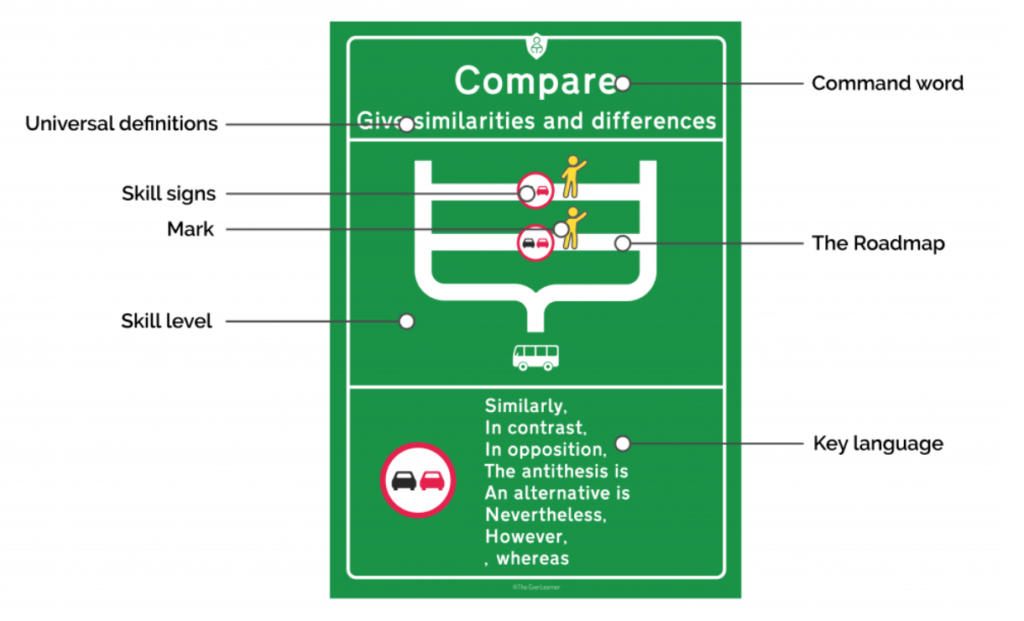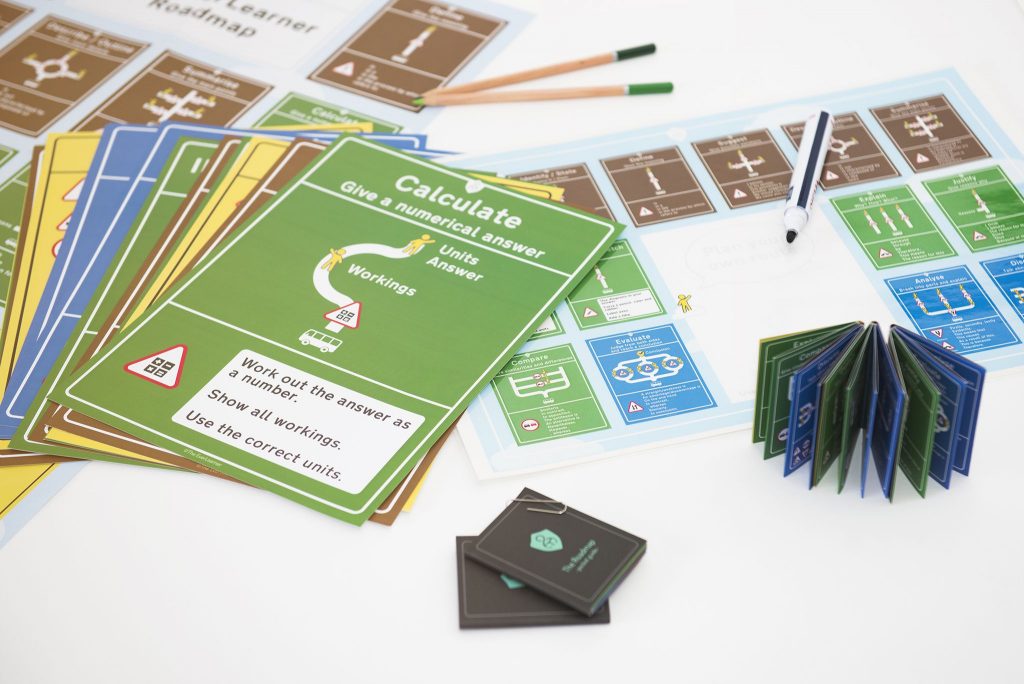Exam season is now just a few months away and now is the time many teachers will be thinking about how to squeeze those extra few marks out of the papers. How can we get students to write just that little bit more fluently or add that extra sentence to pick up those extra marks?
That's exactly (well, partly*) what The Roadmap is all about.
The Roadmap is a visual representation of how to answer the most common exam questions. Whether students are asked to describe, explain, analyse or discuss, The Roadmap can help by providing clear, visual stimuli, along with suggestions for vocabulary, which ensures they structure their answer in such a way that means they answer the question being asked and pick up those crucial marks.
Have a look at the anatomy of a Roadmap.

Each Roadmap has a simple definition of what the skill means, a visual representation and the language which can be used in the answer to connect ideas together.
Students imagine they are the driver of the bus. Their aim is to 'pick up Marks' along the way (Mark is the little yellow character). Each road they drive along is an idea (some content) in their answer. So in the 'compare' example above, let's say the question was to compare cats to dogs. Students may decide the left-hand road is the 'cat' content and the right-hand road is the dog content. Students would not be credited (there are no Marks on these roads) if they say "cats are cuddly" or "dogs like to play fetch" because Mark is found on the connecting roads between the 2 ideas. So a good comparative answer would be something like:
"Cats are cuddly. Similarly, dogs like to snuggle when they are tired".
or
"Cats like to be independent, whereas dogs like to be with people".
(Green indicates the content and orange represents the Roadmap language).
Students follow the roads and use this to guide their use of the content from the specification linking it with the key language from The Roadmap when they come across a Mark. By doing so, the art of writing exam answers becomes de-mystified. Moreover, rather than provide a rigid structure like PEE, PEEL or IDEA, this method is flexible enough to fit specific exam questions and adaptable enough to suit questions with different numbers of Marks.
Once students are confident, they can begin to design their own Roadmaps to tailor their answer even more to the question being asked. This means that their writing gains flair and personality and that it does not become restricted by the structures put in place to support them.

*If you're wondering why I said earlier that this is 'partly' what The Roadmap is about, it is because we believe that, if used enough and embedded from an early age, not just during the lead up to exams, The Roadmap can have an impact on the way students think, not just write. If a student thinks through the frame of 'evaluate' and they know this means to judge something from both sides, then they are equipped with the skill of evaluation. The same goes for comparison: armed with the skill of comparison, students are able to think about the similarities and difference between different items. If used enough, students can become genuinely evaluative, analytical thinkers.